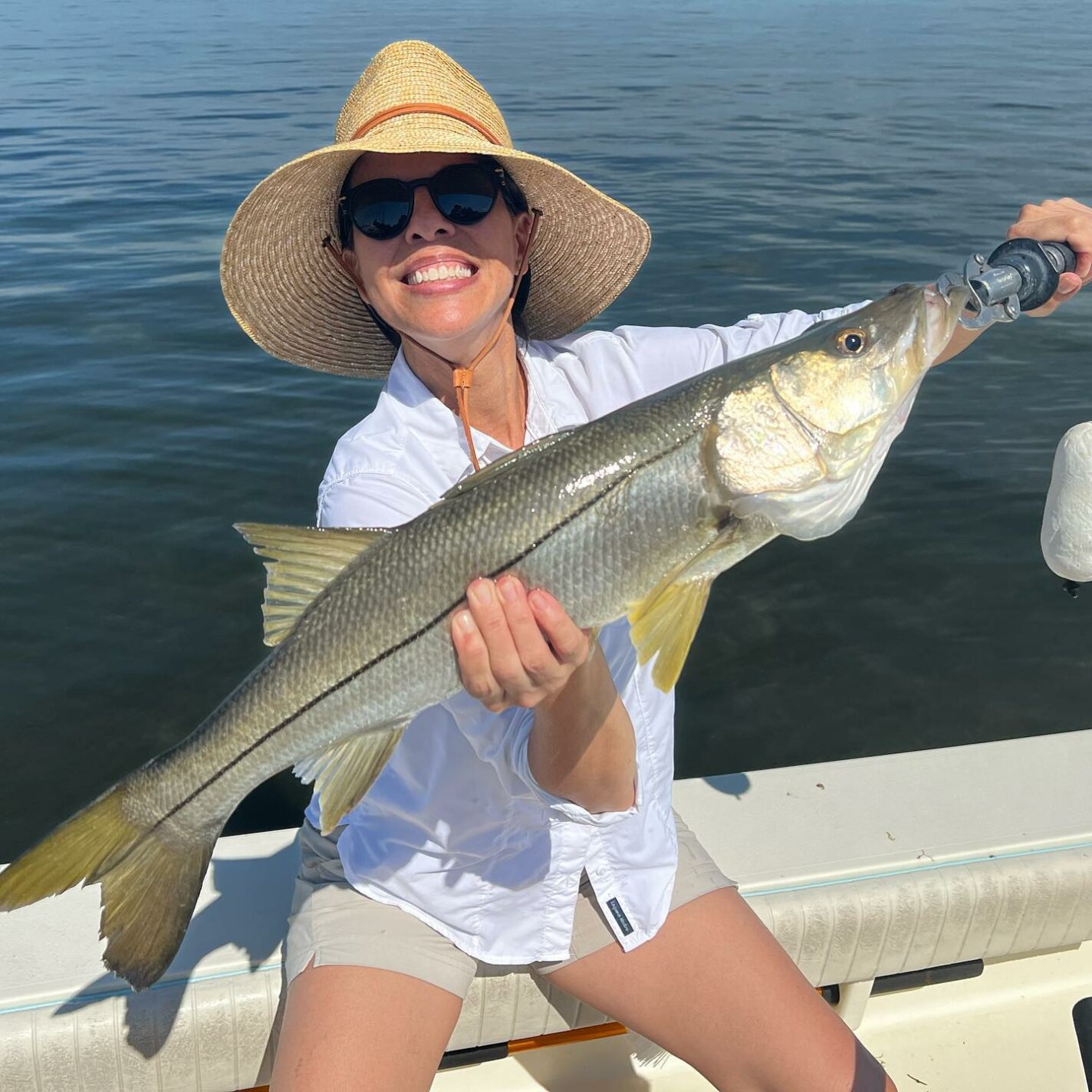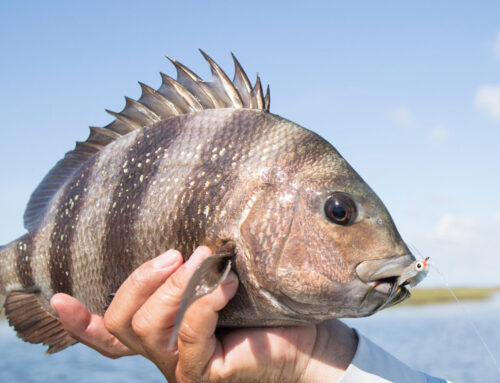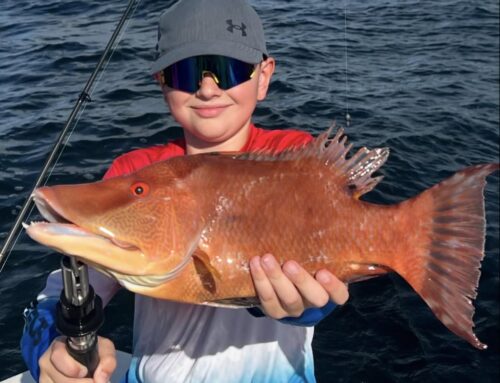Last Updated on July 23, 2025 by Writer
As the long days of summer begin to fade, Anna Maria Island’s inshore waters shift in ways that are subtle on the surface but dramatic underneath. This isn’t just a cooling trend or a seasonal passing. The entire structure of the ecosystem reorganizes. Water chemistry changes. Bait collapses. Predators migrate, condense, or vanish from once-reliable zones. For fishermen who know what to watch, the weeks after summer bring a hyper-dynamic opportunity window, packed with complexity, but rich in payoff.
Recognizing the Real Start of the Shift
Forget the calendar. After-summer fishing begins not with a date, but with a pattern. Daily highs that once hovered near 90 dip into the low 80s. Nighttime lows settle in the 70s. Winds lean more consistently northeast. Tidal ranges stretch wider. The sky flattens with the first arrival of structured frontal systems. Water temperatures fall into the low-to-mid 80s and begin to slide with each cold push. These are the real triggers. Once they hit, the entire inshore system begins to unravel and reassemble.
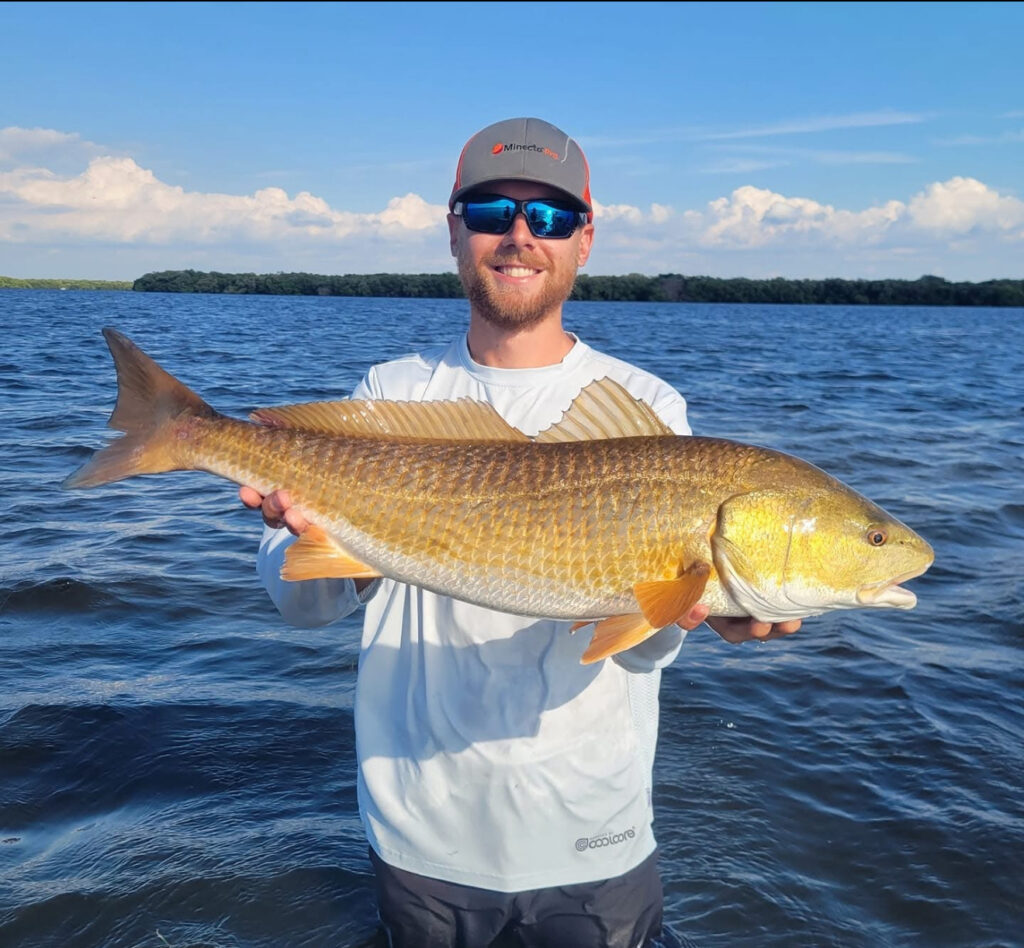
The Water Column Reorganizes
Every layer of the inshore environment reacts at a different rate. That lack of synchronization creates complexity, and opportunity.
Temperature and Thermocline Behavior
As the surface cools first, the deeper layers remain warm. The thermocline compresses rapidly, especially across mid-depth flats and enclosed basins like Palma Sola Bay and Long Bar. This compression traps bait and predators in narrow vertical zones. In the deepest spots, oxygen becomes layered, forcing fish to relocate between tides just to stay in a survivable band.
Dissolved Oxygen and Chemical Fractures
In places like Bimini Bay and Perico Bayou, oxygen depletion begins to create daily refuge shifts. Morning lows can be severe, especially after windless nights or back-to-back rain events. Decaying organic material from mangrove detritus and runoff burns oxygen rapidly. This creates lateral movements. Fish abandon back creeks by midday and stack up along structure or in channels where water flow and oxygen remain stable.
Rainfall, Salinity, and Nutrient Reorganization
Post-summer fronts and tropical remnants dump heavy freshwater into an already strained system. Rain doesn’t mix evenly. Instead, it rides atop heavier saltwater, forming a halocline that stretches across flats, pockets, and channels.
- Palma Sola Bay becomes layered, with freshwater capping brackish mid-depths.
- Perico Bayou’s confined shape causes salinity to swing with each tidal surge.
- Bimini Bay sees clearer separation between stormwater and bay salt, creating isolated microzones of bait and predators.
These shifting salinity lines don’t just affect fish. They affect crustaceans, bait movement, and visibility.
Clarity, Light, and Visual Feeding Windows
Wind between systems helps settle suspended sediment. Flats that were milky in August begin to clear. However, shorter days and lower sun angles reduce direct light penetration. Sight feeders like snook and trout shift toward twilight periods or use ambient light near docks and bridge lines to track prey. Clear water near the passes, over hard bottom and oyster ridge, becomes the most consistent visual zone until the next front muddies it again.
The Collapse of Summer Forage
The post-summer forage collapse happens fast. Once oxygen levels begin fluctuating and temperatures slide out of the upper 80s, large bait schools begin to disappear. Pilchards and threadfins vanish from the open flats, retreat from canals, and evacuate the beach edge entirely within days. Some migrate offshore. Others succumb to oxygen pressure and stratified water layers. The result is a system-wide food vacuum that predators feel immediately.
Replacing those dominant baitfish is a mosaic of smaller, tide-dependent forage.
- Glass minnows and silversides begin clustering in higher flow zones with cleaner water.
- Shrimp activity surges, especially at night on strong outgoing tides.
- Juvenile blue crabs and stone crab pulses spike after heavy rainfall, often seen drifting out of mangrove tunnels or across oyster-studded slope lines.
These smaller forage groups don’t just change what fish feed on. They reshape how and when they feed. Ambush predators slow their cadence. Sight feeders hunt tighter to structure. Night activity increases sharply.
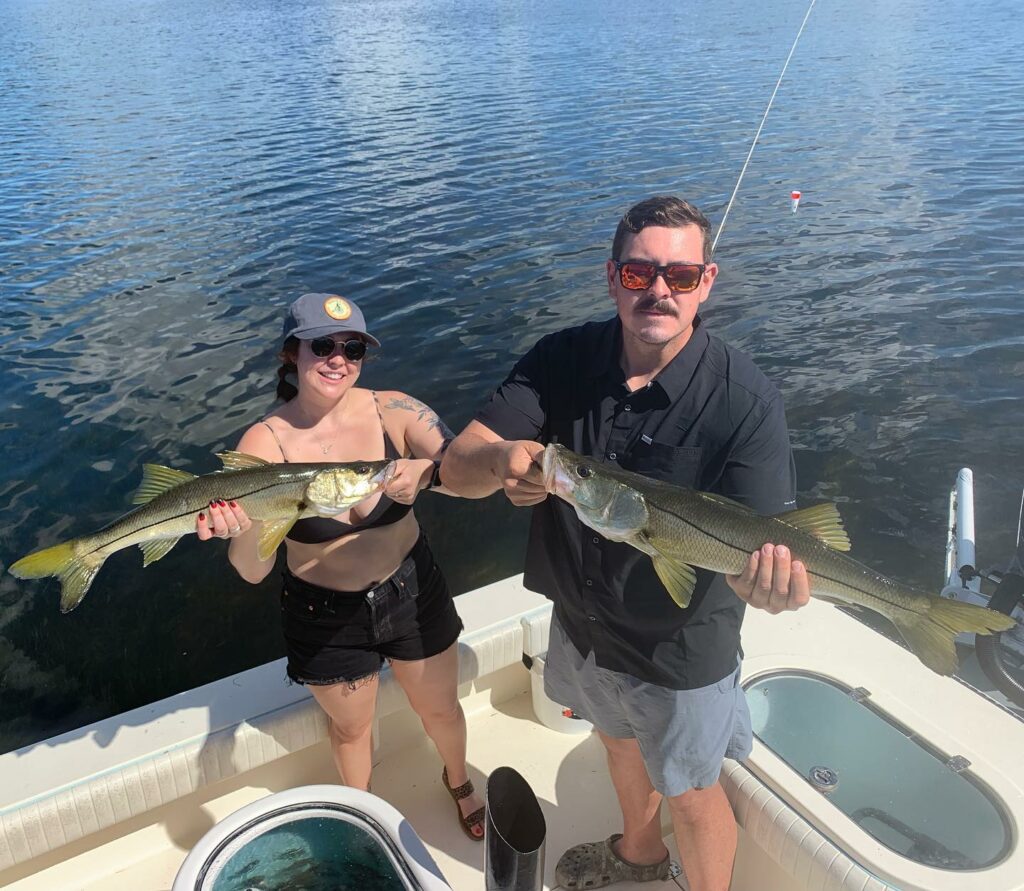
Predator Behavior in Transition
Some predators relocate. Others double down on specific zones. Understanding how each species responds to these ecosystem changes is the key to staying on fish during this unpredictable window.
Redfish
Redfish school tighter than they did all summer, stacking behind mullet corridors and oyster shelves. They use structure and slope edges to feed along sediment seams where small prey concentrate. Their metabolism slows modestly, but their strike aggression spikes before frontal passage and around lunar lows.
Snook
Snook abandon open flats and beach troughs. They become increasingly dependent on vertical structure, especially under docks, bridges, and mangrove canopy. Their feeding aligns with low light and strong tide turns. Slow presentation and natural drift are more effective than summer-style aggression.
Spotted Seatrout
Trout begin slipping off the shallow grass and onto ledges, troughs, and potholes where sediment and temperature stabilize. They adjust to reduced clarity by shifting feeding to twilight hours. As fronts stack up, they begin early-stage winter patterning, holding deeper and ambushing prey pushed by tide compression.
Other Key Species
Flounder
Flounder begin using fall turbidity to their advantage. They stage along ridgelines and base slopes where flow carries disoriented shrimp and small baitfish directly overhead. Their ambush logic becomes more patient, relying on bottom friction and vibration detection.
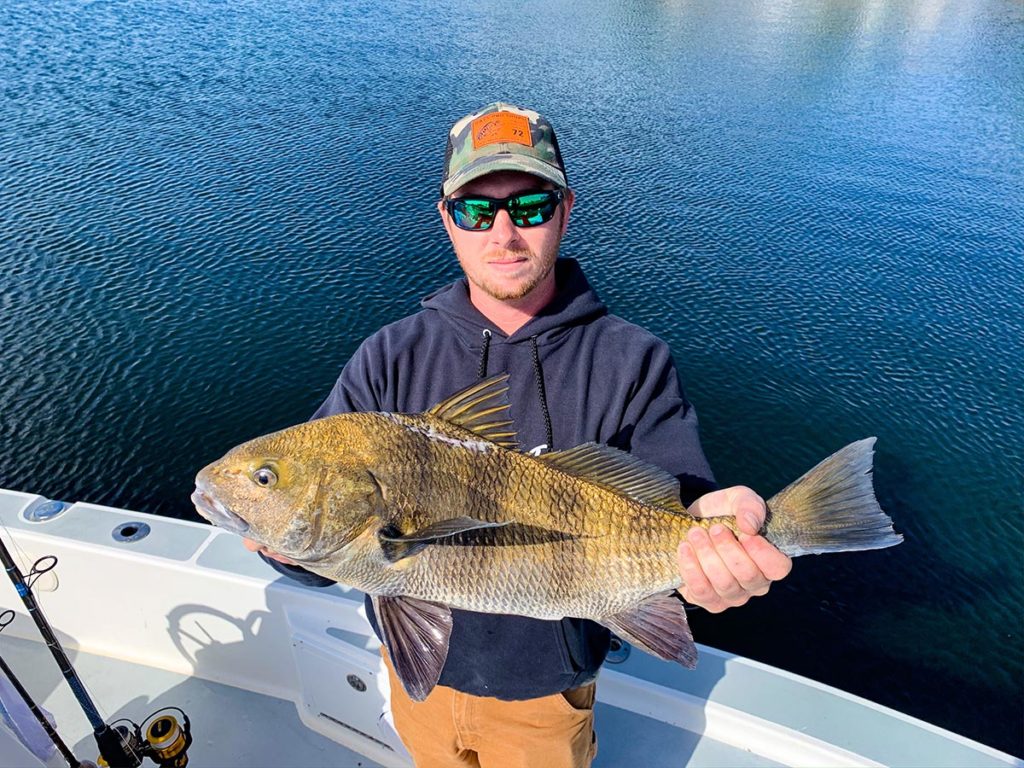
Sheepshead and Black Drum
As crustacean pulses increase, so do feeding cycles for structure-bound predators. Sheepshead move into bridge zones where barnacles flourish. Black drum stage outside mangrove tunnel mouths and canal transitions where rain has unearthed soft-shell crabs and mud shrimp.
Pompano
These fish move in tighter to the beaches as bait shrinks. They prefer post-front water clarity and are most active on sandbars with sharp drop-offs. Their feeding mechanics center around sight and bounce, working off stirred sand and exposed mole crabs.
Tarpon
Juveniles stage in backwater edges, particularly in the transitional layers between runoff and clean tidal flow. Adults that haven’t moved offshore hold near deeper cuts or move unpredictably as forage collapses. Their bite becomes tied to shrimp emergence and low-light ambush.
Mangrove Snapper
Snapper condense on structure where flow remains stable. They follow crustacean surges and use tide swing edges to feed on glass minnows and silversides. Residential seawalls with corner current become high-yield targets.
Spanish Mackerel and Bluefish
These transient predators rush in and out with bait pushes between fronts. They don’t stage. They blitz. Presence is short, aggressive, and dictated by turbidity breaks and current rips.
Gear, Lures, and Presentation
Fall fishing in Anna Maria Island demands adjustments across the board.
- Rigs: Use 20–30 lb braid with 20 lb fluorocarbon leaders for most inshore setups. Hooks should be adjusted to forage size. Smaller profiles work better post-collapse.
- Lures: Match bait visibility and behavior. Use soft plastics on jig heads for bottom action, and suspending twitch baits around structure during twilight hours.
- Live vs. Artificial: Live shrimp dominate, especially at night. Artificial lures excel when water clarity is high and bait is mobile.
- Presentation: Slow it down. Tighten cadence. Focus on current seams and shadow lines rather than open water.
Night Fishing, Habitat Zones, and Structure Focus
Night strategies become more productive as daylight feeding compresses. Key approaches include:
- Lighting: Use dock light bleed and ambient shadows for natural positioning. Avoid direct spotlighting.
- Flow: Focus on moderate tide flow. Stagnant zones rarely hold active feeders.
- Lure Choice: Glow-tail soft baits and natural shrimp imitators perform best under structure.
Prime habitat areas during this transition include:
- Flats with deep potholes for trout and redfish
- Oyster bar edges for sheepshead and crustacean chasers
- Canal mouths and mangrove creek entrances for juvenile tarpon and nighttime snook
- Bridge spans and piers for mackerel, drum, snapper, and snook

Larger System Shifts and Drivers
Several broad-scale patterns impact the fishery after summer:
- Frontal wind reversals drive estuarine inflow and outflow shifts
- Loop Current positioning influences offshore larval delivery
- Horizontal nutrient redistribution leads to temporary forage booms
- Surface drift realignment post-storms affects bait entrances
- Baroclinic and density pressures reshape predator movement zones
- El Niño or La Niña patterns shift forage timing and thermocline formation month by month
- Forage fragmentation often precedes predator relocation
Tying It All Together
Fishing Anna Maria Island after summer is not about reacting to fall. It’s about tracking the breakdown and rebuilding of a fluid system that is rewriting its own rules day by day. From bottom structure to tidal height, every variable plays a role, and the ones who fish well during this phase are those who adjust before the fish do.
Each movement, such as a crab pulse, a bait shift, or a wind reversal, starts a chain reaction. Fish don’t just follow food. They respond to comfort, flow, temperature, and chemistry. Understanding how those layers interact allows fishermen to intercept patterns instead of chasing them.
Captain Nate has spent his life learning this fishery, and every trip we run reflects that experience. To fish this transition with precision, book a trip with us out of Anna Maria Island.

